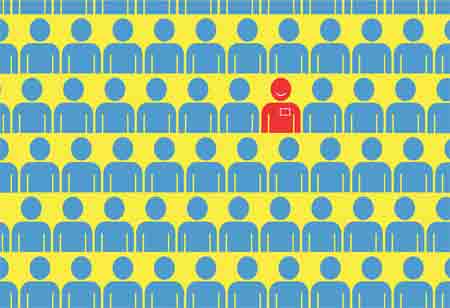THANK YOU FOR SUBSCRIBING
Be first to read the latest tech news, Industry Leader's Insights, and CIO interviews of medium and large enterprises exclusively from Hrtech Outlook
THANK YOU FOR SUBSCRIBING

By
HR Tech Outlook | Tuesday, November 30, 2021
Stay ahead of the industry with exclusive feature stories on the top companies, expert insights and the latest news delivered straight to your inbox. Subscribe today.
Fremont, CA: HR is experiencing a massive shift as a function that has traditionally depended on intuition and "gut-feel" to make people choices. Because of the increased use of various HR technology, firms now have simple access to vital employee data for decision making.
Using statistical modelling and quantitative science to employee data to enhance business results is known as HR analytics. HR leaders may use analytics to gain meaningful insights into prominent people issues across enterprises.
Centralize all Employee Data
The first step in the HR analytics journey is to consolidate various sources of personnel data into a single repository. Employee information frequently gets scattered across many HR systems, Excel spreadsheets, and paper records. Data access across disparate systems is inefficient and time-consuming. Therefore, it is critical to have a single source of truth to assure data accuracy and consistency (centralized data repository). After the company have gathered all of the employee data, one may create key performance indicators to assist them in understanding how their performance relates to business results.
Create an HR Dashboard
Data visualization is vital to the success of any analytics endeavour. An HR dashboard serves as a one-stop-shop for all HR data, both internal and external. A graphical/visual representation of all of this data will help monitor and benchmark it to gain insights into the HR metrics that define success. For example, one can quickly obtain real-time data on critical HR indicators like headcount, cost per FTE, attrition rates, time-to-fill, and cost-to-hire.
Build Analytical Capabilities
Most HR teams are still unfamiliar with analytics and lack the requisite capabilities to lead practical analytics adoption efforts. As a result, it is critical to teach the HR staff's analytical skills in collaboration with its business intelligence team. Once the company has developed a strong analytics skillset, the company will be able to provide a more comprehensive business context for all human capital choices.
Put HR analytics into Practice.
The following stage is to identify a business problem that must get solved. It might be as simple as increasing retention, recognizing high-performers, or lowering cost-per-hire. The idea here is to connect data to measurable business outcomes. The business challenge may get prioritized based on two primary criteria: business effect and effort required. The analytics journey should begin with an impact vs. effort matrix. Begin with concepts that have a significant impact yet need minor work.
Drive Continuous Improvement
Once a company have started utilizing HR analytics to address business problems, the company must constantly check the analytics process for inefficiencies, mistakes, and hazards, and follow up on reoccurring issues and adopt structural changes to avoid them in the future. After the company have fine-tuned the process to eliminate discrepancies, the company will be ready to move on to the next level – Predictive HR Analytics.



